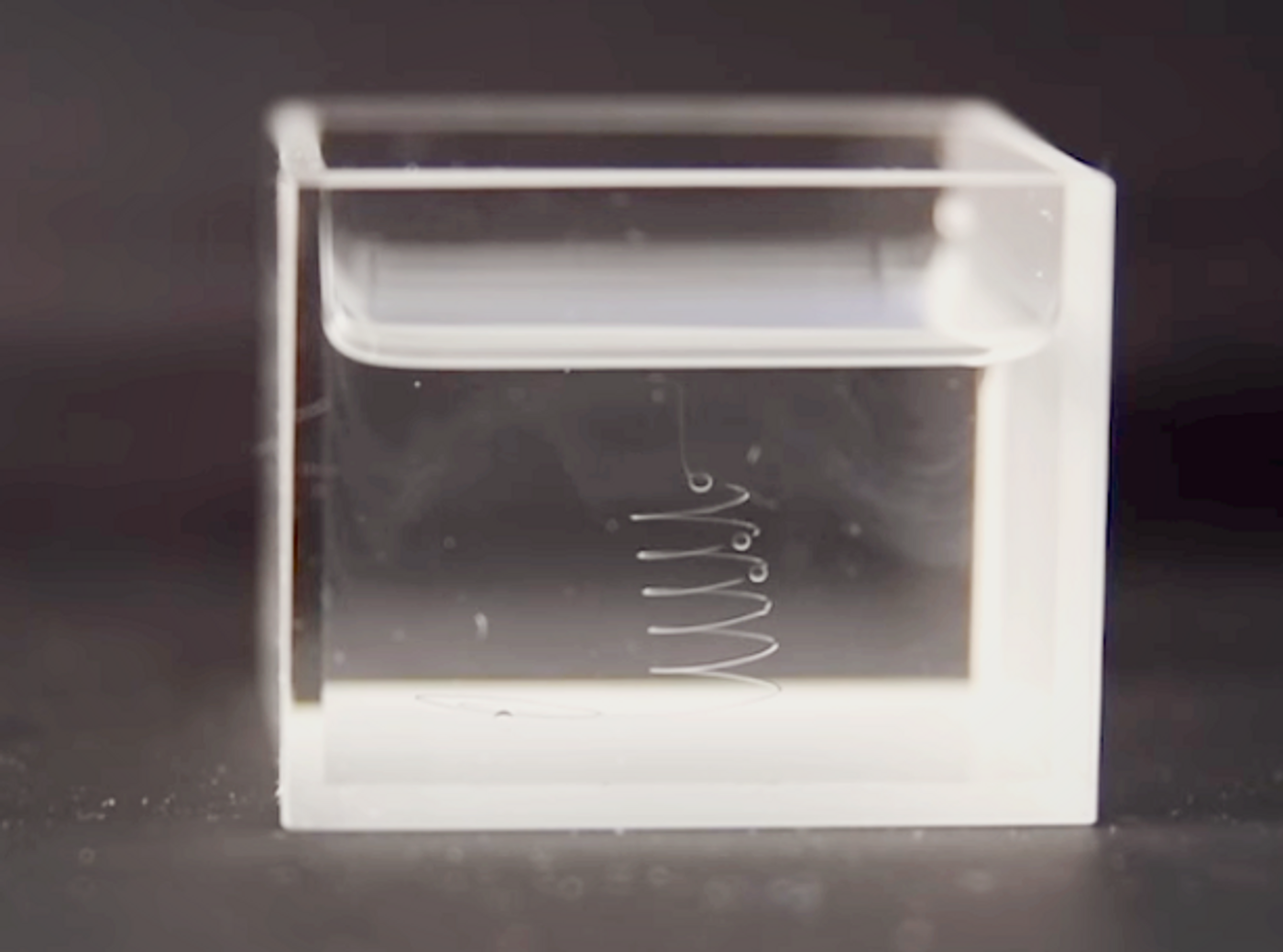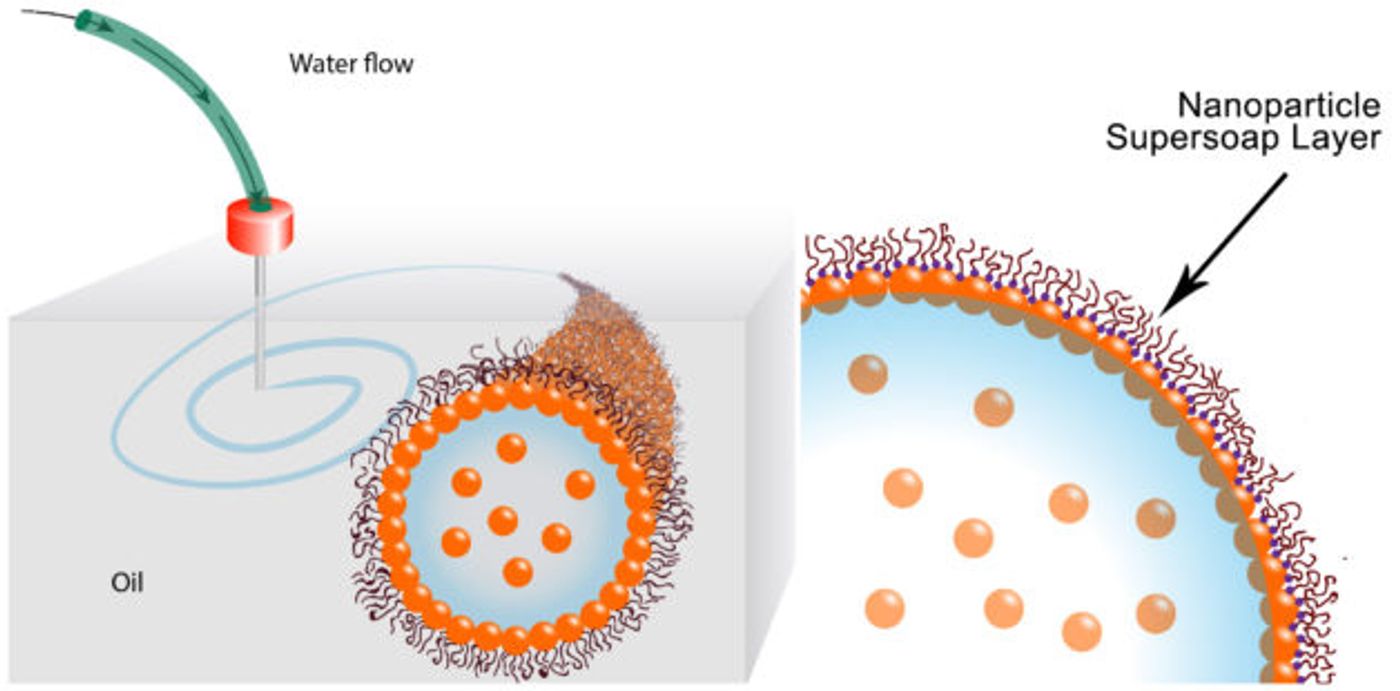Breakthrough: 3D Printed Liquids
Researchers from the Lawrence Berkeley National Laboratory have created and automated a method of 3D-printing tubes of one liquid inside another – in this case, water inside of silicone oil. The water can persist in a tube or other shape for months, thanks to a special encompassing and elastic film they created. The scientists predict this process could be useful in the future in the realms of flexible electronics, nanochemistry and medicine.
“It’s a new class of material that can reconfigure itself, and it has the potential to be customized into liquid reaction vessels for many uses, from chemical synthesis to ion transport to catalysis,” said Tom Russell, who developed the material with researcher Joe Forth, among others.
The team gave a liquid a stretchy but persistent skin or film by first adding gold nanoparticles to water. They then added polymer ligands, macromolecules made up of smaller repeating similar units, which have binding properties, to the oil. According to a Berkeley Lab press release, “The gold nanoparticles and polymer ligands want to attach to each other, but they also want to remain in their respective water and oil mediums.” Where the oil and water meet, some of the ligands and nanoparticles combine into an elastic skin, also called a nanoparticle supersoap, that locks the liquid structures into place. They’ve now produced threads of water between 10 microns – thinner than a hair -- and 1 millimeter in diameter, in both spiral and branched shapes, up to several meters long.
The encapsulated water can be shaped into various forms, as Russell explains:
This stability means we can stretch water into a tube, and it remains a tube. Or we can shape water into an ellipsoid, and it remains an ellipsoid. We’ve used these nanoparticle supersoaps to print tubes of water that last for several months.
The scientists have been able to change the shape of the water structure by applying an external force and temporarily breaking the supersoap coating’s stability, and Russell calls the structures “endlessly reconfigurable.”
The researchers automated this process by altering a standard 3D-printer. The plastic-printing parts were traded out for a syringe pump and needle that release liquid. The newly formatted printer was programmed to extrude the water in specific patterns like spirals. Watch the process below.
The paper, “Reconfigurable Printed Liquids,” was published in the journal Advanced Materials in March 2018.
Sources:










